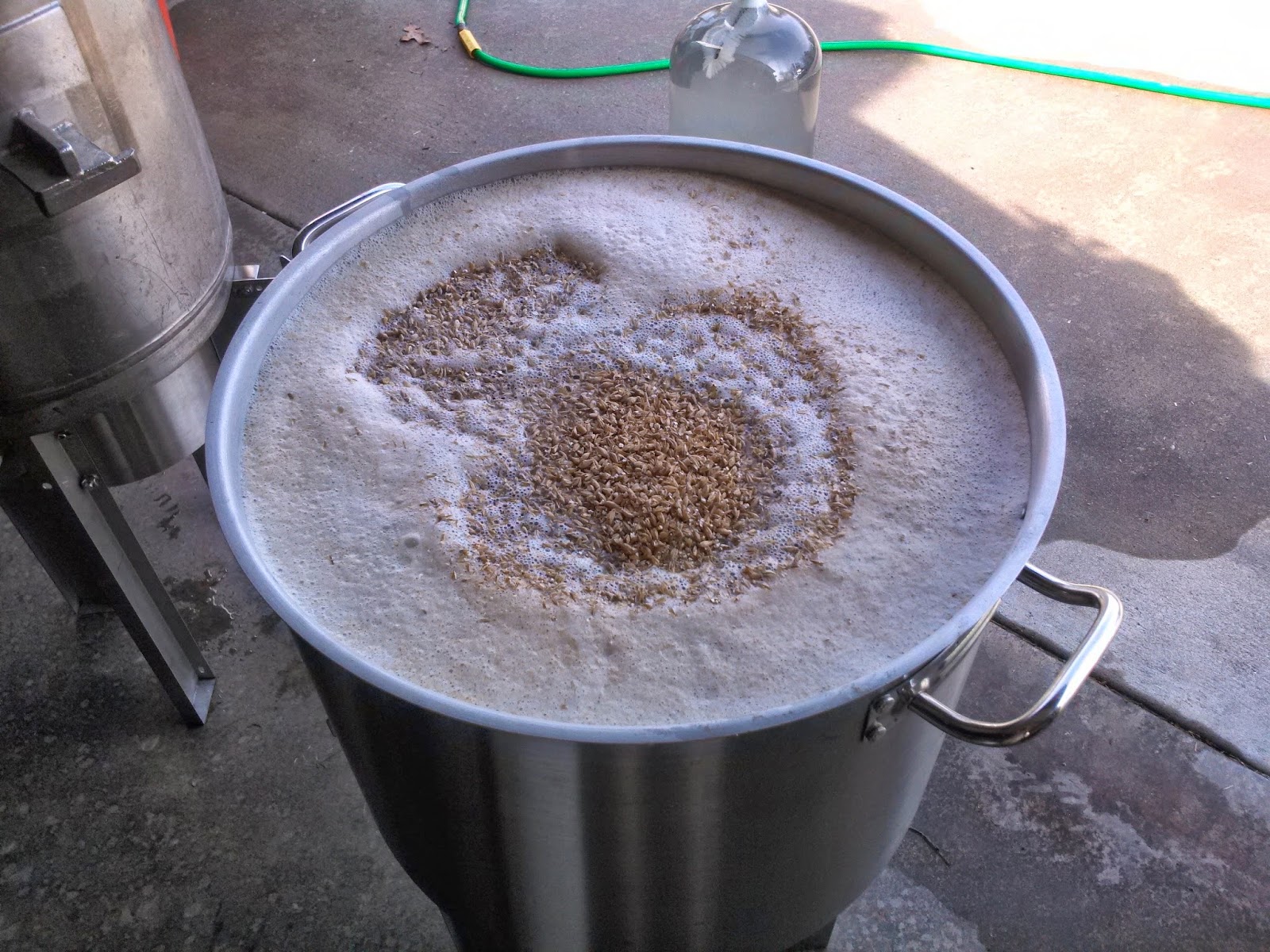Each time we gather, the brewthers and brewisters (Willie, Mark, Amber, and myself) try to bring homebrew offerings to sip by the fire. Those that drive can bring more than those that fly and have to ship their brew. Ashley and I have big plans to drive this year, so I have big plans to bring copious amounts of delectable (hopefully) homebrew. I hope to arrive in Marion with 3 different 5-gallon kegs. Brewing 10 gallon batches makes it easy to have beer on tap at home while saving enough for family gatherings.
The beers in order for me are:
Amber Lager (This is actually the beer I made for Oktoberfest 2014 and I had one keg left....decided to save it)
English Mild
Smoked Brown Porter
The English Mild was the same recipe from my first ever ten gallon batch. If you'll recall from that recipe I ended up with an OG much higher than anticipated but the resulting brew was quite delicious. I decided I would try to recreate that batch and ordered extra base grain to be sure to hit my target OG. Well the base grain I ordered from an online retailer showed up with minimal crushing. Long story short, I ended up with a lower OG than anticipated but was the exact OG from the original recipe I intended to brew from my first batch. An interesting twist of fate. Either way, fermentation went fine and I kegged that brew up last weekend. I used the 1028 London Ale yeast and recycled that yeast into my next brew, a smoked brown porter. Before I get to that recipe, here's a few pics from the Mild session.
 |
| Might be hard to see here but I rigged up a sparging system to pump hot water over my grains during the lautering process. |
 |
| Collecting the run-off, good color. |
 |
| Boil |
 |
| Post-fermentation. Going into the keg. |
The smoked brown porter recipe was one I developed based off a few recipes and concepts I've read in JZ's 'Classic Recipe' book. The primary recipe is supposed to be very similar to Sam Smith's Taddy Porter but I added rauch (smoked) malt to add some smoky complexity. Here's the recipe I came up with:
14# Marris Otter (Had to supplement with 4# of locally sourced Marris Otter to get to target OG)
5# Rauch Malt
2# Brown Malt
2# Crystal 40L
1# Chocolate Malt
0.5# Pale Chocolate Malt
2.8oz of Fuggles (4.5%) at 60 minutes
0.3oz of EKG (5.7%) at 60 minutes (had it left over and thought, eh, I'll add it)
1.2oz of Fuggles (4.5%) at 10 minutes
Repitch of 1028 London Ale yeast, ferment at ~65F.
As I type this the smoked brown is winding down primary fermentation. I will keg it in one week. One thing to note is that throughout this entire process I've detected very little smoked character. Not in the mash, not in the boil, not in the fermentation. Further research shows that brewers experience varying levels of smokiness with rauch malt. So I may have just gotten my grains from a lighter smoked batch...which is unfortunate. Who knows, maybe the smoke will be there in the finished product. Pictures:
 |
| Used the pump to transfer my strike water to the kettle (I'm trying to save my back). |
 |
| Nice looking mash |
 |
| Took my sparking a step further and secured the pumped water outlet to a copper piece that spans the mash tun. |
 |
| Neat boil photo with hops |
I hope all these brews turn out good and that my breathers and brewisters can enjoy them with me in a few more short weeks!
































